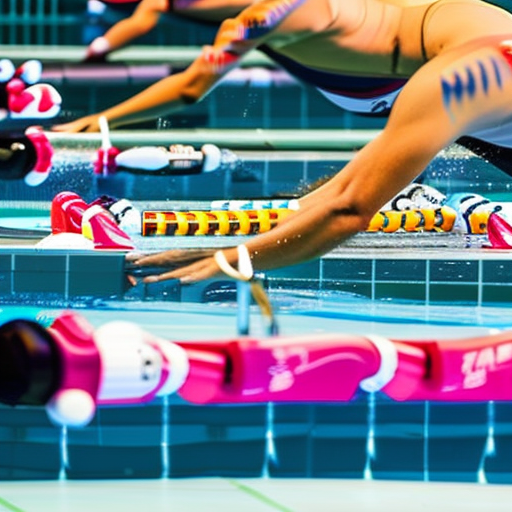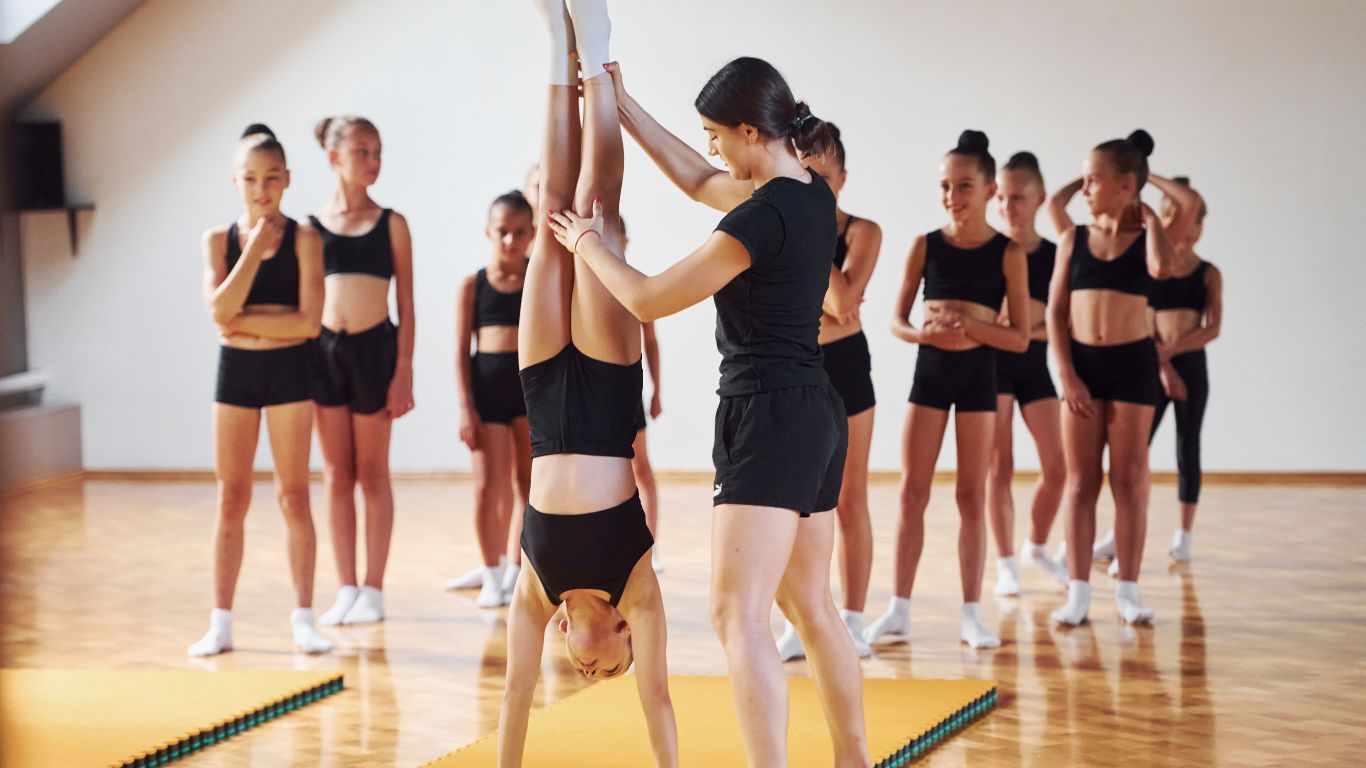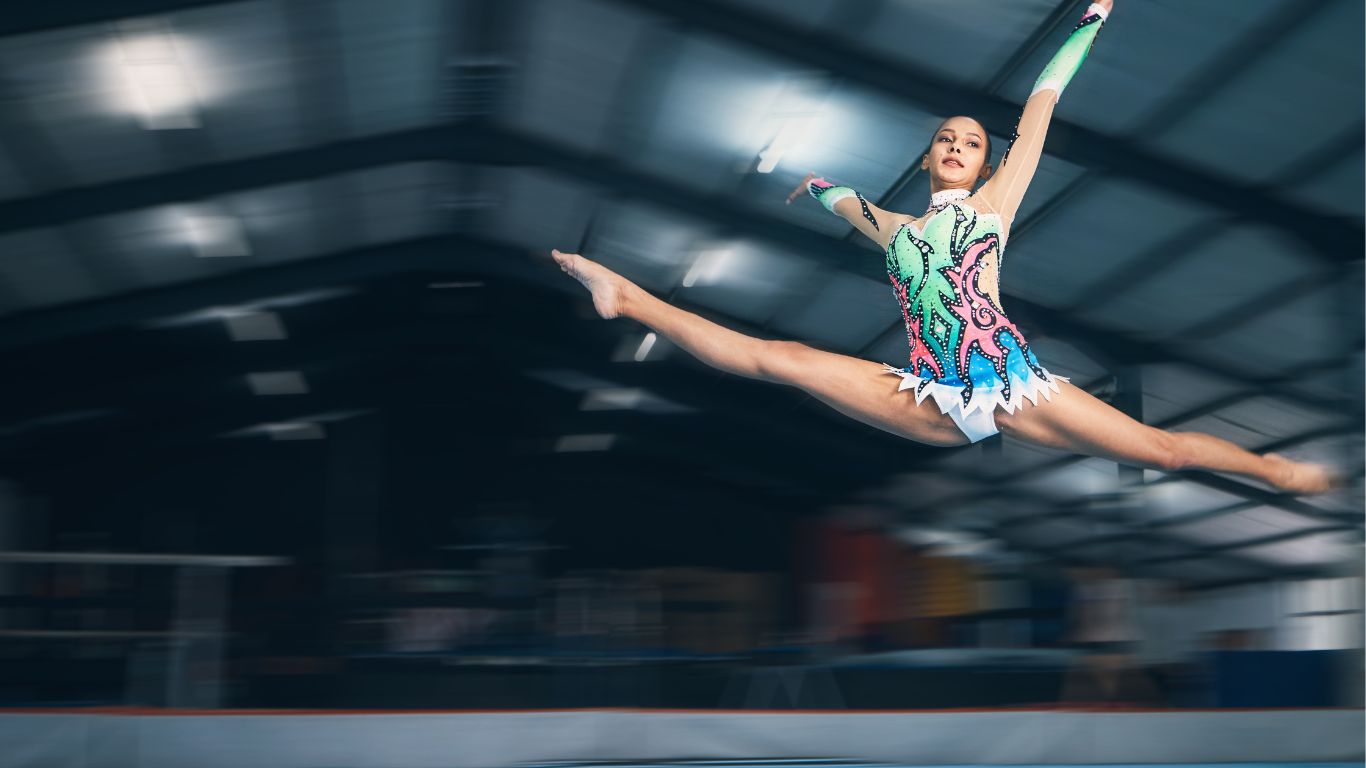To swim, first, become comfortable in the water. Then, practice floating and kicking while moving your arms to propel yourself forward.
Additionally, try to maintain a relaxed and rhythmic breathing pattern. Remember to keep your body aligned and use your legs and arms in coordination to maintain balance and momentum in the water. Swimming is a popular and enjoyable activity that offers a multitude of benefits for individuals of all ages.
Whether you want to cool off on a hot day or engage in a low-impact aerobic exercise, learning how to swim is a valuable skill. We will explore the basic techniques and steps involved in swimming. By following these guidelines, you can become more confident and comfortable in the water, ultimately mastering the art of swimming. So grab your towel and dive in as we delve into the world of swimming.
The Basics Of Swimming
Learn the essentials of swimming with expert guidance on how to improve your swimming skills. Master the basic techniques, including breathing, strokes, and body positioning, to become a confident and capable swimmer. Whether you’re a beginner or looking to refine your abilities, these fundamentals will help you enjoy the water with ease.
Choosing The Right Technique
Choosing the right swimming technique is essential for beginners to develop a strong foundation. Here are a few popular techniques that you can consider:
- The Freestyle Stroke: Also known as the front crawl, this is the most common and fastest swimming technique. It involves rhythmic arm and leg movements while keeping your face in the water.
- The Breaststroke: A slower but efficient technique, the breaststroke requires symmetrical arm and leg movements. Your head should stay above water during breaths.
- The Backstroke: As the name implies, this technique is performed on your back. Continuous arm motions and flutter kicks are used while maintaining a flat body position.
- The Butterfly Stroke: Known for its grace and power, the butterfly stroke requires simultaneous arm movements and dolphin kicks. It is often considered the most challenging technique.
Each technique has its own set of benefits, and it’s important to choose the one that best suits your comfort level and swimming goals. Remember, practice and patience are vital to mastering any technique.
Understanding Key Movements
Regardless of the swimming technique you choose, there are key movements that are essential to master. These movements help propel you through the water efficiently and improve your overall performance:
- Kicking: Proper leg movements are crucial for a balanced and streamlined body position in the water. Different techniques have specific kicking patterns that you need to learn and practice.
- Arm Strokes: Your arms play a significant role in swimming, providing most of the propulsion. Learning the correct arm movements, including entry, pull, and recovery, is necessary for effective swimming.
- Breathing: Breathing techniques vary depending on the swimming technique. It’s essential to learn proper breath control and coordination with your strokes to maintain rhythm and avoid fatigue.
- Body Position: Maintaining a horizontal body position and keeping your body streamlined helps reduce drag and improve your efficiency in the water. Practice proper body alignment and balance.
By focusing on these key movements, you can gradually improve your swimming skills and enhance your overall performance in the water.

Credit: tim.blog
Building A Strong Foundation
Learning how to swim is an exciting journey that begins with building a strong foundation. By focusing on key aspects such as breath control and body positioning, as well as mastering the kick and arm strokes, you can develop the necessary skills to swim confidently and efficiently.
Breath Control
Mastering breath control is essential when learning how to swim. It allows you to maintain proper oxygen intake and manage your body’s buoyancy in the water. To practice breath control, start by standing in chest-deep water and taking slow, deep breaths. Gradually progress to submerging your face in the water while exhaling through your nose, and then inhale as you raise your head above the water’s surface. Repeat this process until you feel comfortable and confident in regulating your breathing.
Body Positioning
Having the correct body positioning is crucial for efficient swimming. It helps reduce drag and allows you to move through the water with ease. To achieve optimal body positioning, focus on the following:
- Maintain a horizontal body position by keeping your head, hips, and legs aligned.
- Engage your core muscles to help stabilize your body in the water.
- Keep your arms extended in front of you, ensuring they are shoulder-width apart.
- Relax your neck and roll your body slightly from side to side to initiate movement.
- Ensure your feet are relaxed and pointed, with slight flexion at the ankles.
Mastering The Kick And Arm Strokes
Once you have established proper breath control and body positioning, it’s time to focus on mastering the kick and arm strokes. These techniques will propel you through the water efficiently and help you maintain the correct body position.
When it comes to the kick, aim for a rhythmic motion using small, fluttering movements of your feet. Keep your legs and ankles relaxed, allowing the force to come from your hips while maintaining a slight bend in your knees.
For the arm strokes, focus on maintaining a controlled and fluid movement. Start with your arms extended in front of you, then pull one arm back while the other arm extends forward. As you reach the end of the pull, rotate your body slightly to the side. Remember to keep your fingers together and your hands relaxed during the entire stroke.
By mastering the kick and arm strokes, you will gain the confidence and coordination needed to swim effectively and enjoyably.
Refining Your Technique
If you want to take your swimming abilities to the next level, refining your technique is crucial. Improving efficiency and speed, perfecting turns and starts, and ensuring proper form all play a key role in becoming a proficient swimmer. Here are some tips to refine your swimming technique and enhance your performance in the water.
Improving Efficiency And Speed
Efficiency and speed are vital components of successful swimming. To enhance efficiency, focus on maintaining a streamlined body position to reduce drag. Utilize your kick to propel yourself forward, making sure to engage your core muscles for stability. Additionally, refine your stroke technique, ensuring each movement is purposeful and contributes to forward momentum. Emphasize proper breathing techniques to optimize your oxygen intake and maintain endurance.
Perfecting Turns And Starts
Mastering turns and starts is essential for competitive swimming. When executing turns, practice timing and precision to maintain your speed through the transition. Work on your flip turn technique to efficiently change direction and push off the wall with power. For starts, cultivate explosive strength and precise timing to maximize your initial push off the block. Concentrate on achieving an optimal dive angle to enter the water smoothly and gain momentum.

Credit: m.facebook.com
Mental Preparation And Focus
When it comes to swimming, mental preparation and focus play a crucial role in achieving success. It’s not just about physical strength and technique; your mindset can make all the difference in your performance. In this section, we will explore two key aspects of mental preparation: harnessing the power of visualization and overcoming common challenges.
Harnessing The Power Of Visualization
Visualization is a powerful technique that can help you improve your swimming skills. By picturing yourself executing each stroke with precision and efficiency, you can train your mind to enhance your performance in the water. It’s like a mental rehearsal that primes your body to follow suit.
To harness the power of visualization effectively, follow these steps:
- Find a quiet and comfortable space where you can relax without distractions.
- Close your eyes and take a few deep breaths to center yourself.
- Visualize yourself in the pool, feeling the water enveloping your body.
- Immerse yourself in every detail of the swimming experience, from the sound of the splashing water to the sensation of your muscles working.
- Imagine each stroke, kick, and turn with utmost precision and confidence.
- Repeat this visualization exercise regularly to reinforce your technique and build mental resilience.
Overcoming Common Challenges
Swimming, like any other sport, comes with its fair share of challenges. However, with the right mindset, you can overcome these obstacles and continue to progress in your swimming journey. Here are some common challenges swimmers face and tips on how to overcome them:
| Challenge | Tip for Overcoming |
|---|---|
| Fear of water | Start with shallow water and gradually work your way towards deeper areas. Take swim lessons with a qualified instructor who can help you build confidence in the water. |
| Breathing difficulties | Practice proper breathing techniques, such as exhaling underwater and inhaling during arm recovery. Gradually increase your lung capacity through regular swimming and cardiovascular exercises. |
| Lack of motivation | Set achievable goals and reward yourself when you accomplish them. Join a swim group or find a swimming buddy for added motivation and accountability. |
| Plateau in performance | Work on improving your technique through drills and seek feedback from experienced swimmers or coaches. Incorporate interval training and varying workout routines to challenge your body and avoid stagnation. |
By addressing these common challenges and maintaining a positive mindset, you can overcome any mental barriers that may hinder your swimming progress. Remember, mental preparation and focus are key to unlocking your full potential in the water.
Achieving Long-term Progress
When it comes to swimming, achieving long-term progress is essential for honing your skills and becoming a more accomplished swimmer. By incorporating cross-training for swim fitness, setting realistic goals, and tracking your improvement, you can ensure consistent advancement in your swimming abilities. Let’s explore these strategies in more detail.
Incorporating Cross-training For Swim Fitness
Cross-training is a valuable approach that complements your swim training and improves overall fitness. By engaging in different activities such as biking, running, or weightlifting, you can target different muscle groups and enhance your endurance, strength, and flexibility.
Cross-training not only prevents boredom but also helps prevent overuse injuries that can occur from repetitive swimming motions. Additionally, it allows you to build strength in areas that swimming alone might not target, ultimately improving your swimming performance.
Consider adding cross-training exercises to your weekly training schedule. Aim for at least two to three sessions per week, allocating time to activities that complement your primary focus on swimming.
Setting Realistic Goals And Tracking Improvement
Setting realistic goals is paramount to long-term progress in swimming. Rather than setting lofty, unattainable objectives, break down your goals into smaller, more achievable milestones. For example, instead of aiming to swim a certain distance effortlessly, focus on gradually increasing your distance each week or improving your stroke technique.
Tracking your improvement is crucial for staying motivated and monitoring your progress. Keep a record of your swim sessions, noting the distance covered, time taken, and any observations you make. This record will help you identify areas for improvement and measure your advancements over time.
Utilize technology such as fitness apps or swim-tracking devices to gather accurate data about your swims. These tools can provide insights into your stroke rate, pace, and efficiency, helping you refine your technique and measure your progress more precisely.
In conclusion, incorporating cross-training for swim fitness, setting realistic goals, and tracking your improvement are essential for achieving long-term progress in swimming. By diversifying your exercise routine and consistently working towards achievable milestones, you can enhance your swimming abilities and maintain steady growth as a swimmer.
Credit: www.tiktok.com
Frequently Asked Questions On How To Swim
How Can I Improve My Swimming Technique?
To improve your swimming technique, focus on proper body alignment, practice breathing techniques, and work on your strokes. Consider getting a coach or taking swimming lessons to receive guidance and feedback on your technique.
Is Swimming A Good Form Of Exercise?
Yes, swimming is an excellent form of exercise. It provides a full-body workout that is low-impact, helps build cardiovascular endurance, tones muscles, and improves flexibility. Regular swimming can also help with weight management and reduce the risk of chronic illnesses.
What Are The Benefits Of Swimming For Children?
Swimming offers numerous benefits for children, including improved coordination, stronger muscles and bones, enhanced cardiovascular fitness, and increased confidence and social skills. It is also a fun way for kids to stay active and healthy while enjoying the water.
Conclusion
Swimming is an excellent way to stay fit and enjoy the water. Whether you are a beginner or an experienced swimmer, the benefits of swimming are numerous, including improved cardiovascular health, muscle strength, and stress relief. With the right techniques and consistent practice, anyone can become a proficient swimmer.
Embrace the water and make swimming a part of your active lifestyle.








